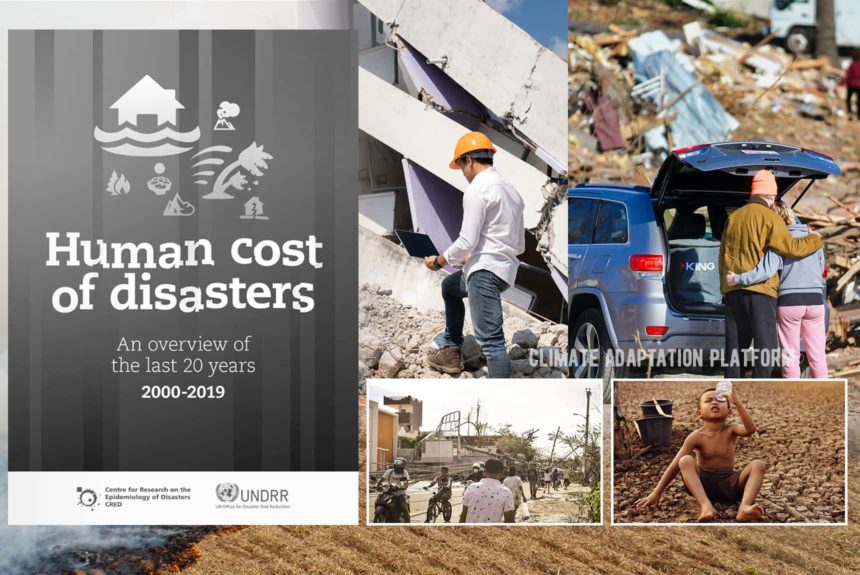The frequency of extreme events worldwide is getting hard to ignore, especially the enormous suffering and losses caused by the crises.
The IPCC sixth report pulls no punches when describing the devastating impacts of human activity on the planet. “It is unequivocal that human influence has warmed the atmosphere, ocean and land,” according to the most authoritative report on climate change.
The UNDRR (United Nations Office for Disaster Risk Reduction) report, “The human cost of disasters: an overview of the last 20 years (2000-2019),” provides the complex statistics of disaster events globally in the last 20 years, covering 2000 to 2019.
The report “confirms how extreme weather events have dominated the disaster landscape in the 21st century.”
Using the Emergency Events Database (EM-DAT) data, maintained by the Centre for Research on the Epidemiology of Disasters (CRED), the report shows a rise in the number of disaster events between 1980 to 1990 and 2000 to 2019 worldwide.
Between 1980 and 1999, EM-DAT recorded 4,212 disasters linked to natural hazards, which caused approximately 1.19 million deaths and affected more than 3 billion people. The economic losses amounted to US$ 1.63 trillion.
In the last two years, between 2000 to 2019, 7,348 documented disasters worldwide claimed 1.23 million lives or around 60,000 per year, affected over 4 billion people, and caused 2.97 trillion in economic losses.
While better recording and reporting may partly explain some of the increase in events, it is also due to a rise in the number of climate-related disasters.
Data from the EM-DAT shows that:
- “Between 2000 and 2019, there were 510,837 deaths and 3.9 billion people affected by 6,681 climate-related disasters. This compares with 3,656 climate-related events which accounted for 995,330 deaths (47% due to drought/famine) and 3.2 billion affected in 1980-1999.”
- “The number of people affected by disasters, including injuries and disruption of livelihoods, especially in agriculture, and the associated economic damage are growing compared to the decrease in mortality.”
- “This is evidence that in a world where the global average temperature in 2019 was 1.1˚C above the preindustrial period, the impacts are being felt in the increased frequency of extreme weather events, including heatwaves, droughts, flooding, winter storms, hurricanes and wildfires.”
Floods and storms have become more frequent.
Human cost (2020) says that significant floods have more than doubled in the last twenty years from 1389 to 3254, and the number of storms has increased from 1457 to 2034. The report also documents major rises in climate-related disasters such as drought, wildfires, and extreme temperature events (Human cost, 2020).
Read the entire report by clicking the link provided in the “Source” below.
Source:
The human cost of disasters: an overview of the last 20 years (2000-2019). UNDRR. Retrieved from https://www.undrr.org/publication/human-cost-disasters-overview-last-20-years-2000-2019



Leave a Reply